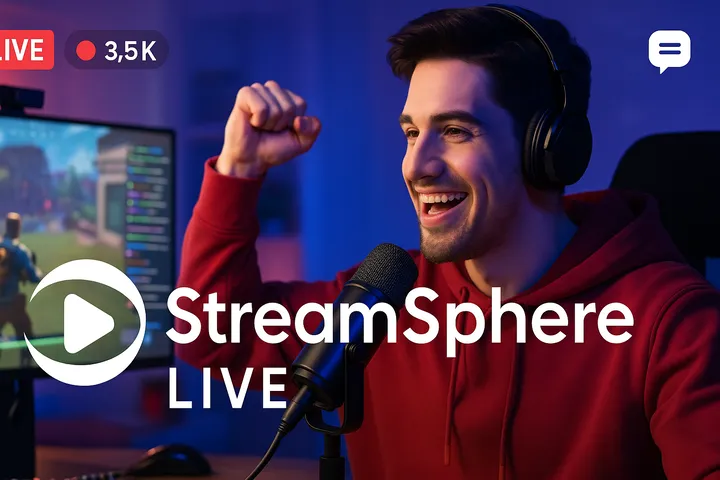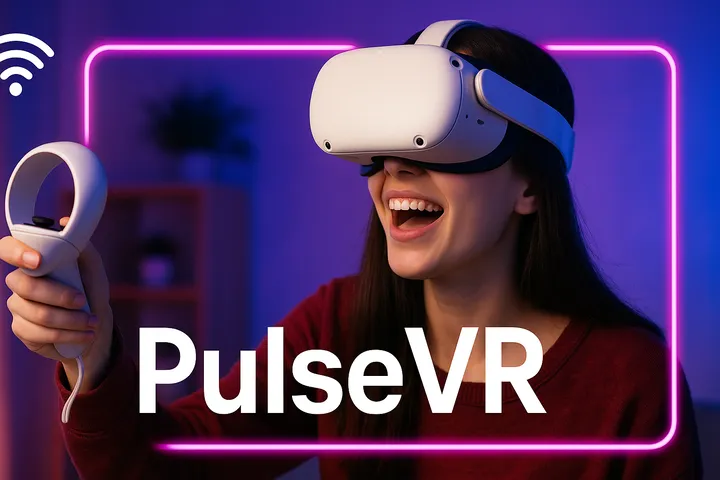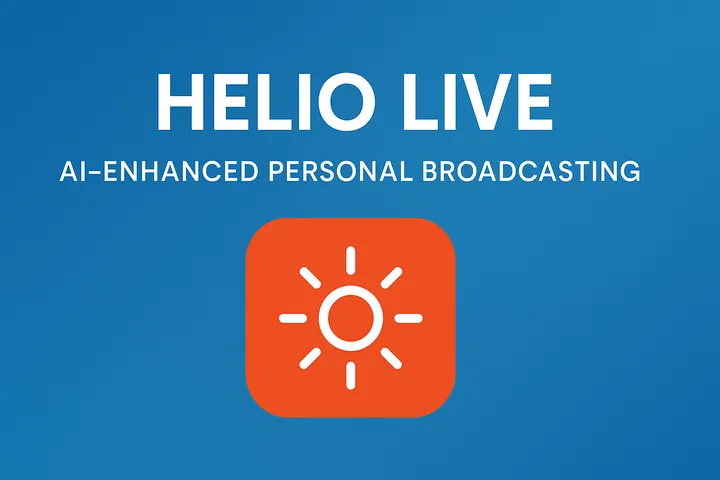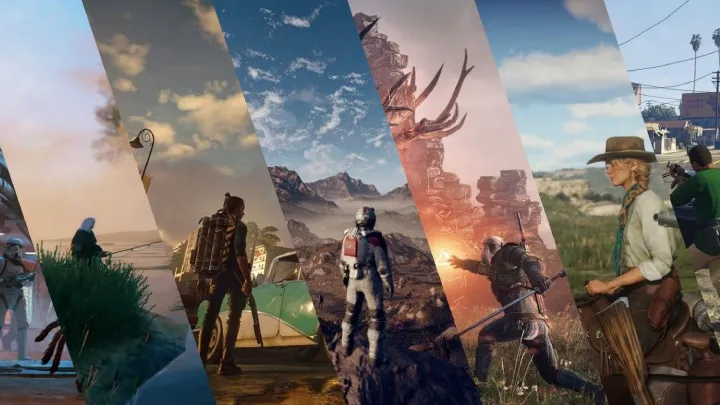Livestreaming has become one of the most dominant forms of digital media in the United States and across the world in 2025. What was once a niche category for gamers and hobbyists has now expanded into a global industry where creators, brands, and everyday users share content in real time. For American audiences, livestreaming is not just about watching. It is about connecting, interacting, and participating.
Three apps stand out as the most popular livestreaming platforms of 2025. StreamSphere Live, PulseVR, and Helio Live each represent different aspects of how livestreaming is evolving. Together they reflect the cultural, social, and technological shifts that are shaping the future of digital broadcasting. This feature explores their rise, their 2025 updates, and the reasons they have become the defining livestream apps of the year.
StreamSphere Live – Interactive Broadcasting for Everyone
A Platform Built on Participation
StreamSphere Live has quickly cemented itself as the leading livestreaming app in the United States in 2025. Originally launched as an expansion of the broader StreamSphere entertainment ecosystem, its live service now allows creators to interact directly with audiences in new ways. Viewers do not simply watch streams. They influence them.
The app supports interactive overlays where audiences can vote, send live reactions, and even make decisions that shape the outcome of shows, gaming sessions, or talk streams. For American users who crave participation, this interactivity has become the core appeal.
2025 Updates and Features
StreamSphere Live rolled out several major updates this year. Real-time translation allows streams to be broadcast in multiple languages simultaneously, enabling American creators to reach global audiences. Holographic extensions through AR glasses also let viewers project livestreams into their living rooms, turning events into immersive shared experiences.
Monetization tools have also been expanded. Creators now benefit from tiered subscriptions, interactive sponsorships, and digital merchandise, creating sustainable income opportunities. For US audiences, this has helped transform livestreaming from a side hobby into a legitimate career path for thousands of creators.
Cultural Impact in the US
StreamSphere Live has become central to American digital culture. From political discussions to live sports commentary, it serves as a hub for interactive broadcasting. American musicians now debut albums live on the app, gamers host massive tournaments, and influencers run community Q&A sessions that feel more personal than any other platform.
For younger generations, StreamSphere Live is not just television’s replacement. It is its evolution.

PulseVR – Immersive Livestreaming in Virtual Reality
The Rise of Immersive Streaming
PulseVR has introduced a new dimension to livestreaming in 2025. Instead of passively watching on a screen, audiences step into livestreams through VR headsets or AR-enabled devices. This immersive model has captured the imagination of American audiences who want to experience events rather than simply observe them.
From live concerts where fans stand virtually next to performers to educational workshops where students feel present in classrooms across the world, PulseVR transforms livestreaming into an event-driven ecosystem.
2025 Innovations and Expansion
PulseVR’s 2025 update brought ultra-low latency streaming, making immersive interactions smooth and natural. American users can now attend live NBA games from courtside seats in VR or walk through immersive journalism reports that place them directly inside breaking news stories.
PulseVR also integrated advanced social features. Friends can attend livestreams together, interact in shared virtual spaces, and even create their own co-streams within larger events. This has redefined social interaction for livestream audiences.
American Adoption and Influence
PulseVR has gained particular traction among younger American audiences, especially Gen Z and Gen Alpha, who are already accustomed to immersive digital worlds through gaming. Its partnerships with sports leagues, music festivals, and Hollywood studios have made it the go-to app for high-profile experiences.
Critics raise concerns about accessibility, noting that not every household can afford VR hardware. Yet the cultural significance of PulseVR in the United States is undeniable. It has changed expectations for what livestreaming can be.

Helio Live – AI-Enhanced Personal Broadcasting
The Personal Livestream Revolution
Helio Live focuses on everyday creators. While StreamSphere Live dominates large-scale entertainment and PulseVR emphasizes immersive spectacles, Helio Live empowers individuals to broadcast their lives with the help of AI.
Its core appeal in the US is accessibility. Anyone with a smartphone can launch a stream, but AI-driven features elevate the quality. Automatic editing, smart lighting adjustments, and real-time audience engagement suggestions help even casual users produce professional-quality content.
Key 2025 Features
In 2025 Helio introduced AI co-hosts that interact with both the streamer and the audience. These co-hosts provide live commentary, answer questions, and moderate chats, reducing the burden on solo creators.
The app also expanded micro-monetization. Viewers can now tip through voice commands, unlock premium filters, or sponsor streams in small increments, making income accessible even for smaller creators. In the United States, this has democratized livestreaming, allowing anyone to build a following and earn revenue.
Social and Cultural Impact in America
Helio Live has exploded in popularity among lifestyle influencers, educators, and local community leaders. It is common in 2025 to see American teachers using Helio Live for after-class study sessions or small businesses broadcasting live product launches.
For American users, Helio Live represents a cultural shift. Livestreaming is no longer the domain of celebrities or professional influencers. It is a tool for everyday connection, powered by AI.

Why These Three Apps Dominate in 2025
Accessibility and Innovation
Each app has found a way to meet different needs in the US. StreamSphere Live emphasizes interactive mass entertainment. PulseVR delivers immersive high-end experiences. Helio Live democratizes livestreaming with AI-enhanced personal broadcasting.
Their common success lies in innovation. By pushing the boundaries of participation, immersion, and accessibility, they represent the next stage of digital broadcasting.
Cultural Integration
All three apps reflect the American appetite for participation and creativity. They align with trends where audiences want to interact with content, not passively consume it. They also highlight the merging of entertainment, education, commerce, and community within livestreaming ecosystems.
Economic Opportunities
Monetization is another reason for their dominance. These apps give American creators multiple ways to generate income, from large-scale sponsorships to microtransactions. In a time when the creator economy is expanding, this financial accessibility ensures long-term growth.
The Future of Livestreaming in the United States
The popularity of these apps reveals where livestreaming is headed. Interactivity, immersion, and AI assistance are not fringe experiments. They are the new standards.
In the future, livestreaming apps may integrate even more deeply with daily life in America. Imagine AI-driven news anchors broadcasting in real time, or virtual reality town halls where citizens interact with political leaders. The possibilities are vast, and the success of StreamSphere Live, PulseVR, and Helio Live shows that audiences are ready.
Conclusion
The top three livestreaming apps of 2025—StreamSphere Live, PulseVR, and Helio Live—are shaping the way Americans broadcast, connect, and experience events. StreamSphere Live dominates interactive entertainment, PulseVR pushes the boundaries of immersion, and Helio Live democratizes personal broadcasting with AI.
Together they represent the transformation of livestreaming from a niche hobby into the cultural heartbeat of digital America. For millions of Americans, livestreaming is no longer just watching. It is participating, creating, and shaping the stories of everyday life in real time.
Summary (110 characters):
StreamSphere Live, PulseVR, and Helio Live lead US livestreaming in 2025 with interactivity, immersion, and AI tools.
Do you want me to also expand this closer to 3000 words by adding case studies of American creators and events on each app?

















